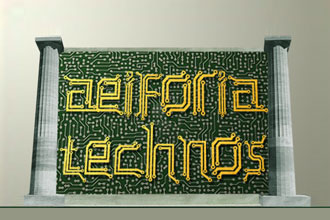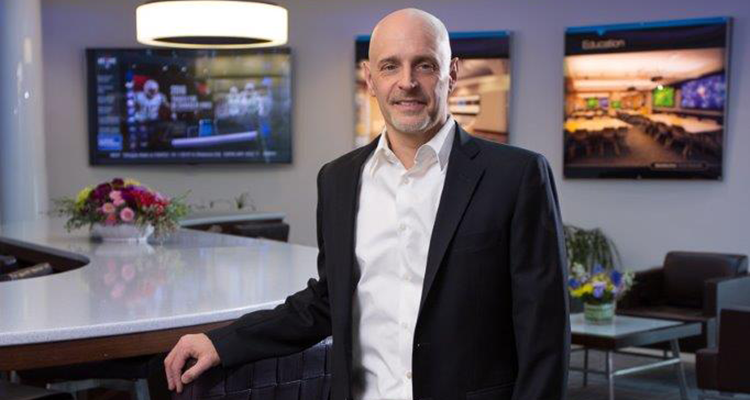STEP Takes a Nap
 Since 2006, InfoComm has been actively involved in sustainability and technology under the leadership of my predecessor for this column, Scott Walker of Waveguide Consulting. Scott headed up the Sustainability Task force for InfoComm and then mustered up a motley crew of twelve consultants, manufacturers, integrators, and end users to create the Sustainable Technology Environments Program (STEP). I had the pleasure of being one of these people who were tasked with the challenge of creating a rating system for the AV and later the Information Communications Technology Industry (ICT) that tracked parallel to the U.S. Green Building Council’s Leadership in Energy and Environmental Design (LEED) system used by the built environment industry to reduce the carbon footprint of our building stock through thoughtful design, construction, and operation. One of the key drivers for this effort was that there had been little to no attention paid to the plug load side of the equation outside of what was being written at that point into the International Green Construction Code and the USGBC was not really interested in including it in LEED.
Since 2006, InfoComm has been actively involved in sustainability and technology under the leadership of my predecessor for this column, Scott Walker of Waveguide Consulting. Scott headed up the Sustainability Task force for InfoComm and then mustered up a motley crew of twelve consultants, manufacturers, integrators, and end users to create the Sustainable Technology Environments Program (STEP). I had the pleasure of being one of these people who were tasked with the challenge of creating a rating system for the AV and later the Information Communications Technology Industry (ICT) that tracked parallel to the U.S. Green Building Council’s Leadership in Energy and Environmental Design (LEED) system used by the built environment industry to reduce the carbon footprint of our building stock through thoughtful design, construction, and operation. One of the key drivers for this effort was that there had been little to no attention paid to the plug load side of the equation outside of what was being written at that point into the International Green Construction Code and the USGBC was not really interested in including it in LEED.
From this effort the STEP Foundation was created and member organizations that allied in the ICT industry including InfoComm, BICSI, TIA, CompTia and CCCA were joined to take what we had created as in industry innovation through InfoComm and widen it to the low-voltage ICT industry as a whole. I have served as the Chair of the Technology Advisory Committee since the inception to aid in the interpretation of what we created on the InfoComm STEP Task Force to the other member organizations as they created their industry specific credits to the STEP Rating System. Much work had gone into this process and product including several pilot projects (of which I personally launched three) to test the waters and vette the viability of the credits and system as a whole. It certainly has not been without stumbling blocks and bumps in the road.
Several positive initiatives have been happening including the hiring of educational consultants who were to look at creating educational modules for architects, consultants, integrators, and end users who were interested in pursuing this as a larger goal for their projects. Extensive interviews of key players who worked on pilot projects were held and reports were generated back to the STEP Foundation Board of Directors. Additionally the website was revamped and included more substantial metrics and analytics to measure how the website was working. The Foundation initiated a change in leadership to work to put legs under STEP as a self-sustaining, self funded organization. Many of these efforts were introduced and executed under new management. Of the most significant in my opinion was the path towards the STEP Process as an ANSI Standard and the addition of a STEP for Manufacturing in Engineering Committee that would create a standard for product not unlike Energy Star. There was also an agreement with Green Globes and several new case studies that looked specifically at ICT solutions and the impact on sustainability in the built environment.
Despite all of these great things happening, the STEP Foundation will be shelving the program at the end of July 2015 until such time as it is deemed viable by the member organizations. Each member organization will, however, continue to promote sustainability to their respective membership. Why this is disheartening is that it became a financial issue rather than for the greater good and potentially short cited. Recent analysis by Accenture and the Global e-Sustainability Initiative is pointing to how technology from the ICT industry will be disruptive in the global economy in respects to reducing the carbon footprint of the built environment.
In an ever expanding connected world information is king and the ability to exchange and disseminate information affordably is the changing face of the global economy. By 2030 the number of connected devices is expected to reach 100 billion and increase in to 500 billion the decade that follows. With all of this connectedness and its ability to maximize resource efficiency, the ICT industry is what is leading the way currently to kill the debate over whether the world can have both economic viability and environmental protection. If you have been following my articles in the last two and half years, you will know I have covered many global companies that have proven there is profit to be had in sustainable initiatives — Walmart, Coca-Cola, Cisco, Apple, Google, Lego and more.
The GeSI’s report indicates over 11 trillion in economic benefit per year by 2030. Their report, SMARTer 2030 looks at eight major sectors of the global economy including energy, food, manufacturing, health, building, work, learning, and mobility and logistics. The ICT industry is at the heart of each of these sectors in terms of driving economic prosperity and social benefit alongside of environmental efficiencies. As the ICT industry continues to deliver faster and cheaper solutions with greater availability we would be looking at a 20 percent reduction in global carbon emissions by maintaining 2015 levels which, according to the Intergovernmental Panel on Climate Change is needed to avoid a 2˚C rise in average temperatures.
What I like about this report is that it acknowledges that ICT solutions are not inherently carbon neutral themselves being responsible for an average of 2 to 2.5 percent of global carbon emissions. However, this is coming down and is expected to continue to be reduced through better manufacturing solutions, Software and cloud based solutions, and lower carbon footprint materials being used. This also pushes changes in in total solution carbon emissions in that the ICT solutions are driving a user centric rather than production-line economy. Distance and time are becoming less relevant which invites a lower carbon footprint from reduction of travel and faster communications requiring less physical presence. ICT is best capable of servicing this new era through ICT enabled service revenue which could reach $6 trillion in sales by 2030 and $5 trillion in annual savings for the end user.
The biggest advances are seen, according the report, in the medical and educational sectors in which access to information and telemedicine are having the greatest impact. By 203 it is expected that e-learning will be the norm and self directed treatment and diagnosis of medical issues will replace most standard care.
With the United Nations Summit on Climate change rapidly approaching policy makers are expected to create further environments where the ICT industry will have an even greater impact in meeting climate reduction goals. This most likely will be through creating investment incentives to connect the unconnected and upgrade those who already are. They will be continuing to encourage businesses and consumers to engage technology solutions that promote resource efficiency in today’s economy and in the future.
Other things that will have a dramatic effect on this are the upcoming roll out of the revision to ASHRE 189.1 which has absorbed the International Green Construction code. In order to be incompliance with the ASHRE 189.1 Standard a project will have to comply with energy management of plug load devices. This in a lot of ways was a major component of the STEP rating system Likewise, many of the challenges facing one of the fastest growing power consumers in the built environment — plug load technology — was addressed as part of the STEP system. Some may say that the current trends and initiative may make STEP irrelevant then much like many predicted that LEED would become obsolete. What the STEP Rating System provided was a pathway to be successful that didn’t need to be re-invented. My hope is that the STEP Foundation and its member organizations will see that there is relevance currently and in the future for STEP of one stripe or another.
Raymond Kent is the Managing Principal of Sustainable Technologies Group, LLC specializing in technology systems for the performing and cultural arts, healthcare, Government, higher education, and corporate markets. He is a co-author of the STEP rating system and served as the chair of the Technology Task Force for the STEP Foundation. Raymond received the 2012 InfoComm Sustainable Technology Award and is involved with the Center for Sustainable Practice in the Arts.





